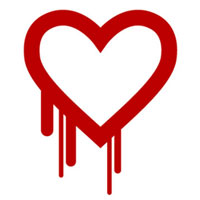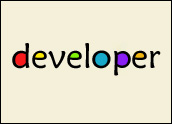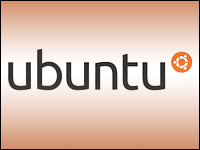
Some 20 years after the Exxon Valdez went ashore on Prince William sound, oil still remains at the bottom of the arctic waters — but not because those responsible for cleanup have ignored it. Rather, multiple attempts to remove the oil from the sea floor have failed. Cold temperatures have rendered the oil too thick to move through pumping equipment.
Frustrated, the Oil Spill Recovery Institute, a nonprofit organization funded by both government and Big Oil, turned to InnoCentive — an online community where companies can post problems they need solved.
The challenges are open to the public. “Solvers,” as InnoCentive calls its participants, win an award — ranging from US$5,000 to $1 million — if their idea or solution is chosen.
John Davis, a construction engineer in the Midwest, won the Oil Recovery Institute’s award, pocketing $20,000. His solution, which had eluded the oil industry for decades, was to modify commercial grade cement pumping equipment to enable the thickened oil to be pumped through barges.
After studying the posted specs, Davis realized that thickened oil and cement share many of the same qualities, Dwayne Spradlin, president and CEO of InnoCentive, told LinuxInsider. Davis used some of his money to fly to Alaska, where he was able to watch his solution in action, Spradlin added.
Next Phase
Welcome to the next phase of crowdsourcing: An evolving concept that entered the tech lexicon around two years ago is now becoming mainstream. At its most basic, “crowdsourcing” means presenting a problem, request or work assignment to a group of people for completion. The people not only contribute to the assignment, but also vote on various aspects of it, making it truly collaborative.
After a few years as an outlier application, crowdsourcing is becoming more mainstream. Companies are turning to the model — sometimes in place of consultants — to solve big business problems.
InnoCentive has funneled about $20 million in prize money to solvers from the likes of Avery Dennison, Eli Lilly, Janssen, Procter & Gamble and Solvay, Spradlin estimated.
As commercial interests harness the crowd, it seems inevitable that some of its earlier characteristics will give way to those supporting corporate goals and efficiencies. For example, Davis’ idea for the Oil Recovery Institute was not vetted by his peers, but by a group of experts that could actually judge the proposed solutions.
Expect to see such tweaks to the model as more companies adopt the crowdsourcing approach, Eckart Walther, SVP of marketplace at LiveOps, told LinuxInsider.
“Almost all crowdsourcing plays I have seen so far use an oversupply of people,” he noted. “That doesn’t work in the real world because it is not practical.” For starters, he said, a company cannot pay all those people — and expecting consistently high-quality work from volunteers is not realistic.
Crowdsourced Call Centers
LiveOps uses a form of crowdsourcing — it calls it “crowdsourcing BPO” — to schedule the 20,000 home agents that support its call center operations. Essentially, it sources complex calls to agents that have the expertise to handle the topics, explained Tim Whipple, VP of virtual call center at LiveOps.
“We are using a large group of people to solve a particular problem,” he told LinuxInsider.
Indeed, contact center operations is a fast-growing category of commercial crowdsourcing, Chris Lamb, IBM manager of Lotus Connections, told LinuxInsider. “There is always a percentage of calls that fall outside the routine — and the regular reps do not have the skills to answer them. We have seen a couple of customers provide their call center staff with the ability to tap into an enterprise’s intellectual capital at a moment’s notice to answer a query.”
My Starbucks Idea
In fact, the customer service space has been particularly receptive to the crowdsourcing approach. Some forward-looking companies are giving their conventional suggestion boxes a makeover, adding crowdsourcing features that invite real customer input into their product development.
My Starbucks Idea — a Web site based on Salesforce.com’s Force.com platform, is perhaps one of the better known examples. Customers can suggest an idea — and then track that idea through either corporate acceptance or rejection. One idea gaining traction is using ice cubes made from coffee — not water — in iced coffee drinks. When the cubes melt, they won’t weaken the coffee.
Last month, Salesforce.com launched a commercial version of the platform for other companies that may want to implement it in-house, Kraig Swensrud, vice president of marketing products at Salesforce.com, told LinuxInsider. “This concept is a great mechanism for companies to engage with their online customer online, particularly about product development.”
Marketing to the Crowd
E-commerce is also highly amenable to crowdsourcing, Joel Lunenfeld, senior vice president and chief innovation officer at Moxie Interactive, told LinuxInsider. Buying sites such as Teambuy.com, for example, let people band together to buy products in bulk and receive a price discount.
Crowdsourcing is also being used to develop relevant FAQs for a particular Web site. “One of the biggest problems with FAQs is that they are imaginary questions written by the company,” noted Lunenfeld.
Some sites are allowing customers to pose questions and have the other clients answer them — much like Yahoo Answers’ format.
Marketing is becoming a popular crowdsourcing play, Lunenfeld continued. Fox, for instance, is using a crowdsourcing application to market its new movie “Marley and Me.”
The movie’s theme is sharing, Lunenfeld said, so Fox is using a crowdsourcing application to help users figure out the best gifts for friends during the holiday season.





















































